“Don’t settle down and sit in one place. Move around, be nomadic, make each day a new horizon”- Jon Krakauer.
Delhi airport always has that overwhelming effect. As we waited for our cab at the car park, we could feel sweat trickling down through every crevice of our body. We were a group of five adults and three children, and weren’t sure if we could be accommodated comfortably in one Innova. As we battled with the cab company asking for an 8-seater and drew a blank, we had to book one more cab, and by the time all was settled and the additional cab arrived with its driver, it was well past midnight. A couple of parathas and curd later, we hit the highway to Dalhousie, via Panipat, Jalandhar and Pathankot.
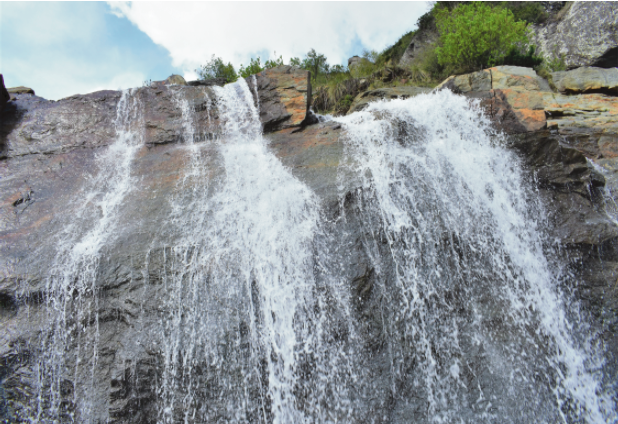
I was cursing my bad luck as our driver, after driving for about an hour complained of sleep or the lack of it, and it was my husband who drove, allowing the driver to sleep for the next three hours! Our lives were more precious than our ire, we decided. We were supposed to reach Dalhousie around five in the morning as per our original plan, but as it had backfired, we were well past all deadlines. I had carefully avoided the regular tourist spots of Shimla, Kulu and Manali as we wanted some peace and quiet up on the mountains, not traffic snarls and crowd. It was post lunch that we arrived at the Dalhousie Club, where we had booked rooms, and got some beauty sleep.
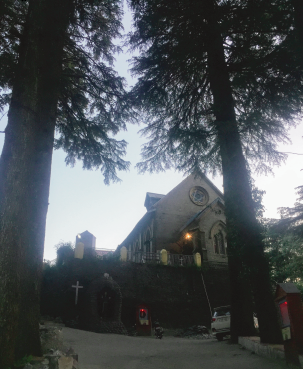
An amble through Dalhousie
As the sun went down, we slowly ambled through the town, a lazy walk leading us to the oldest Catholic church in Dalhousie, Saint Francis Church. The imposing stone edifice built in perfect Victorian style in 1894 boasts of intricate high wooden ceilings, stained glass panes, and its diorama sculptures of the Way of the Cross. The quaint wicket gate and garden around the church gave it an ethereal feel in the setting sun’s light, the pink roses and warm yellow glow from the church offering us tranquility.

Established in 1854 and named after Lord Dalhousie, the British Viceroy, the town was a retreat for British bureaucrats and soldiers. Surrounded by snow-capped mountains on the western Dauladhar ranges, the town is the gateway to Chamba and Pangi valleys. We walked past the saints in different poses, Saint Antony holding a pair of pigeons, Jesus on the Cross being hugged by a disciple, and reached Subhash Chowk. Scores of people strolled across the chowk, with corn stalls throwing up flares of fire. We walked through the Tibetan market, wondering at the scarves, shawls, Chamba slippers, and knick-knacks being sold.
Visiting Sach Pass
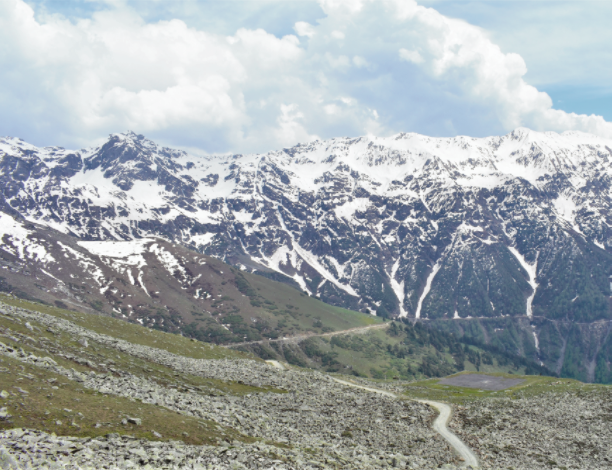
The next day we had plans to visit Sach Pass, about five hours’ journey from Dalhousie. People from South India mostly have never experienced snow, and while planning a trip up the Himalayas, they always look up places where there is possibility of snow. We were no exceptions either, a phone call to some friends in the Army, and we were assured the pass was open. We set out in the morning around seven, after breakfast, as we had only one agenda on hand – travel to Sach Pass and play in the snow! The travel from Dalhousie to Sach Pass is a real ordeal, one should undertake it only if they are sure they can relocate the bones in their body once they get off at the pass. The flitting greenery and blue mountains make up for the loss of balance though. We crossed Chamera lake, watching the gigantic Chamera tunnel with awe.
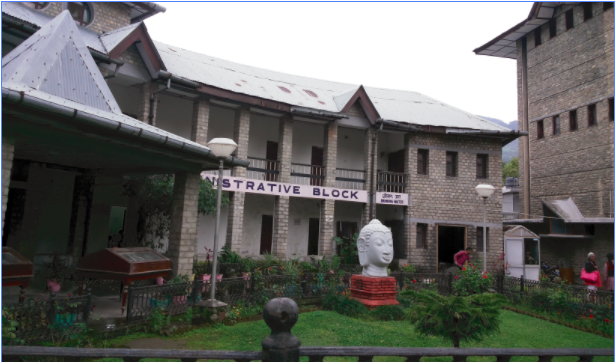
We had a brief stopover for chai and continued up the mountains, crossing Badoh, Tissa and Satrundi helipad. The topography changes dramatically as giant snow-capped mountains start showing up and towering over our heads. Soldiers at the army check-post verified our identity cards and send the vehicles up with caution, saying there had been a land slide recently. We closed our eyes as the cars were off-road the last few kilometers. Snow melting on the roadsides collects and runs across the road as small streams, and at places if one is lucky enough, one can see rivulets gushing from hills as waterfalls. The sight of snow as we neared the pass was mind blowing. Jumping down from our cars, we waded in ankle deep snow, and by the time the husband called me to wear proper earmuffs and cap, I was already freezing.
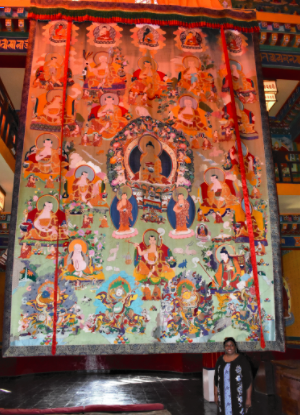
Norbulingka
Have you noticed places that abound with snow always have a Maggi stall nearby? A short walk from the Pass, from out of nowhere was the Maggi stall, selling chai and Maggi. The hot steaming brew and noodles were enough to bring our poor battered bodies back to warmth, and we turned back. A small dhaba on the roadside announced hot parathas, and we stopped. The window of the dhaba offered amazing views of snow and the valleys. Strange, as we ordered food in English and conversed with each other in Tamil, the owner of the dhaba asked, “Amma, thayir venuma?”. (ma, do you need curd?) Taken aback, we queried how he spoke fluent Tamil. He said he had worked for a few years in Sriperumbudur, the automobile hub in the outskirts of Chennai, and had learnt Tamil! “I earned enough to come back and set up this dhaba. The mountains are my home and I can’t leave them”, he said in Tamil. If necessity arises, a person from Himachal will learn Tamil as I have learned Hindi and can converse in it easily. Language is just a mode of communication, eyes and hearts mean more than words, don’t they?
Khajjiar Lake and Chamba town
Our first stop the next day was Khajjiar Lake. The lake by itself is a small heart shaped pond in the middle of a vast grassland. Traffic snarls in Dalhousie can get ugly, and we safely parked our cars about a kilometer from the lake and walked. Translucent zorbing balls rushed across the grassland, para gliders lifted off and landed, rabbits ran around and people renting out traditional Himachal outfits surrounded us the moment we entered the lake area. The grass was so green that a few sheep found their pastures straight in the middle of all this mayhem. We picked a couple of balls for zorbing, tried out the Himachal outfits, and posed for the cameras.
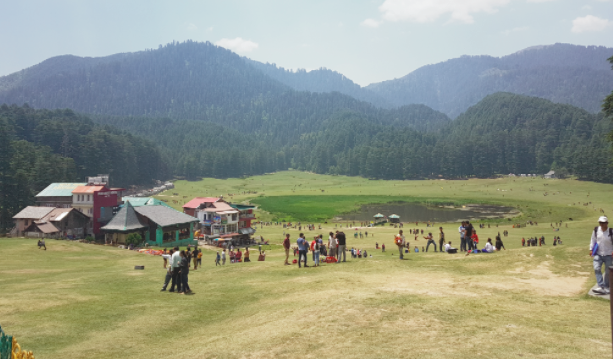
Post lunch, we headed to the town of Chamba, the day’s next stop, as we were intent in visiting the Bhuri Singh Museum in the heart of Chamba town. Situated at the confluence of Ravi and Sal rivers, this quaint town has a glorious past, being the capital town of the Chambiyal Rajput Kings who ruled it from the 6th century CE. The suffix of these Kings – Varmans intrigued me. The town’s name comes from Princess Champavati, on whose request the capital of Chambiyals was shifted from Bharmour to Chamba in 920 CE.
The famed Pahari paintings were nurtured here. This museum is named after Raja of Chamba Bhuri Singh who ruled Chamba when it was set up in 1908. About 8,000 antiquities lie waiting in this museum, waiting to enthrall the visitors. The best among them are inscriptions in Sarda and Chambyali scripts, Indo-Greek coins, Pahari miniature paintings belonging to the Royal family donated to the museum by Raja Bhuri Singh, fountain stone slabs, copper and silver plate grants, wood carvings, memorial stones, tribal jewellery, and musical instruments of the anthropology gallery.
We had planned to visit the Church of Scotland, a stone’s throw away from the main market. It was unfortunate that we couldn’t get hold of the keys to the locked 19th century church. Interestingly, though this church was built by the first missionary in Chamba, William Ferguson, the foundation stone was laid by the Raja of Chamba himself, a devout Rajput Hindu in 1899. The church was built with a huge grant from the king. Tired beyond words, we reached Dalhousie.
The spiritual Dharamshala
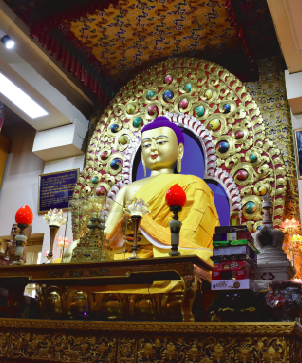
The next dawn we started from Dalhousie to Dharamshala. The route via Nurpur and Dramman was picturesque, winding through the hills and arid mountains. The sweat and heat as we neared Dharamshala showed we had lost altitude. Our first stop for the day was of course, the Dalai Lama Temple. The Tsuglagkhang Complex that houses the Dalai Lama Temple is at the heart of the city. The crowd keeps burgeoning, prayer wheels rotate in unison and scores of people sit, calmly reciting the prayers. The humongous statue of Buddha inside the main temple, and the colourful Thangka paintings hung around it, paintings on the murals, give an ethereal experience to the devotees. This is also the headquarters of the exiled Tibetan government that now functions under the spiritual leadership of the 14th Dalai Lama, Lhama Thondup.
The memorial erected for the martyrs just outside the main temple draws numerous visitors who pray in silence for the martyrs. The Tibet Museum right next to it, called “A long look homeward”, has a huge collection of photographs, documents and articles that induce awareness about the Chinese occupation of Tibet. We stood dumbstruck in front of a torn and mutilated off-white trouser-shirt set that was splattered with blood. It would be a miracle if the man who was subject to that cruel torture is alive today.
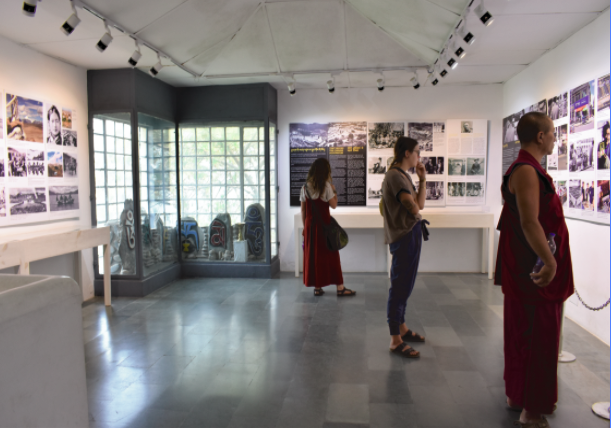
With heavy hearts we watch the videos that are shown about how life is for a Tibetan every day in occupied land. One seldom respects the freedom offered to one, unless one understands how it is to be a slave! The museum offers a window to peek into Tibetan history and its unique culture. It was a treat to see pictures of the flag of Tibet, Tibetan bank notes used once, yak skin coracles, gardruk dancers, monastic festivals in Amdo, black necked cranes, women in Tsang attire, and old pictures of Lhasa.
Our stop after lunch was the Norbulingka Institute in Dharamshala. Started in 1995 at Sidhpur near Dharamshala, this unique institute is dedicated to the preservation of Tibetan arts and culture. The moment we stepped into this beautifully landscaped complex, nature encompassed us totally. Gurgling streams, bamboo gardens designed in Japanese style, colourful birds and insects, gave us peace. The architecture is typically Tibetan, we felt as if we had stepped into some Tibetan temple complex. A guide took us through the complex, where Tibetan artists and artisans were at work, teaching the apprentices. We wandered along the statue-making, Thangka painting, wood carving, wood painting, tailoring and weaving sections. The Thangka painting workshop captured our immediate interest, as we sat and watched about 20 artists at work in unison, only the scratches of the brushes on the medium audible.
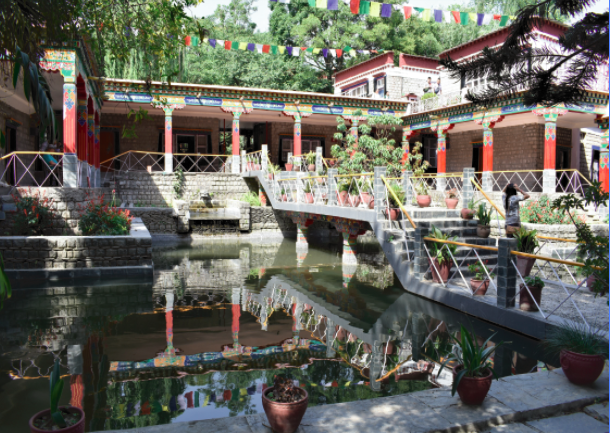
One of them called us aside and showed how tiny plates of gold are melted, and gold colour is obtained and stored in vials for use in the paintings. No wonder these paintings cost a bomb, for the workmanship and material used. It takes about two weeks to complete a small painting, quipped the guide. Hours of concentration and delicate workmanship! At the end of the tour, the guide led us to Deden Tsuklagkhang, a beautiful temple built exclusively by the institute’s artists. There are Thangka frescoes, but what captured our interest was the huge applique Thangka hung from the ceiling, over two stories high, showcasing Buddha and his 16 Arhats. The centerpiece of this temple is the 14 feet gilded Sakhyamuni statue, the largest of its kind outside Tibet!

We walked into the Losel Doll Museum next to the temple and were taken aback, wowed by the beauty of over 100 dolls displayed. Each one is unique, dressed in distinct tribal styles ethnic to various parts of Tibet. The richness and diversity of culture in Tibetan plateau can be seen through the dolls. The mask dance dolls, the set of monk dolls near a lhakang in diorama cases were a treat to the eyes. We returned to the room, all tired and looking to rest, but the daughter pulled us for a trip to the city center for some shopping.
Shopping in Tibetan town
The Tibet local market and the adjoining Tibetan mini market in Jogiwara Road are well known for the unique Tibetan goods sold here – pashmina shawls, hand embroidered purses, incense, precious and semi-precious stones, woolen wear, books, spiritual objects like mandalas, thangkas, decorated conches, bells and dream catchers! The daughter took quite a fancy for the huge dream catchers hanging in about every stall. A silver Tibetan ring designed like a rose caught her attention and we bargained for it, unsuccessfully, and returned to the homestay after gorging on a few aloo parathas and washing it down with chai. Himachal and aloo parathas are inseparabale, I guess. Even small roadside dhabas sell delicious aloo parathas.
The Kangra Fort
Day 5 of the trip was set exclusively to visit the Kangra Fort. Said to be the oldest dated fort of India, the eighth largest fort of India in size, and unarguably one of the largest and most beautiful in the Himalayas, Kangra Fort lies 20 kms away from the town of Dharamshala. The fort is located bang at the confluence of Manjhi and Banganga rivers. At the entrance to the fort is the Maharaja Sansar Chand Katoch Museum, maintained by the Royal Family of Kangra. The museum has on its display valuable sculptures dating back to 9th century CE, lower paleolithic tools, pre -historic stone tools like hand axes, choppers, discoids excavated from Guler, Kangra, Sati stones, and a pricey collection of Pahari paintings donated by the Kangra Royals to the museum.
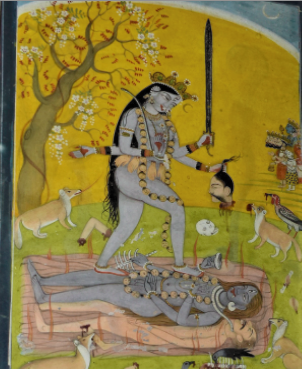
The fort is said to have been established around 1500 BC by Maharaja Susharma Chandra, a descendant of the Katoch family of Rajputs. The earliest recorded account of the kingdom comes from Xuanzang who visited the Kingdom of Kangra, which he mentions as Jallandhra. In 1009 CE, Mahmud of Ghazni invaded Kangra and captured a large booty. The main gates to the fort were built by the Sikhs and from here a long, narrow passage leads to the fort through Ahani and Amiri gates, both attributed to the first Mughal governor of Kangra, Saif Ali Khan.
After a few such gates is the Darshani Darwaza, flanked by statues of Goddesses Ganga and Yamuna which opens up to a large courtyard, to the south of which we found three temples – Ambika Devi, Lakshmi Narayan, and interestingly, a Rishabanatha Jain temple! The Lakshmi Narayan Temple is a marvel, only parts of it now stand, with exquisite floral carvings and miniature gopuras. A British garrison occupied the courtyard until it was damaged in an earthquake in 1905. For a private fort, it has been maintained reasonably well.
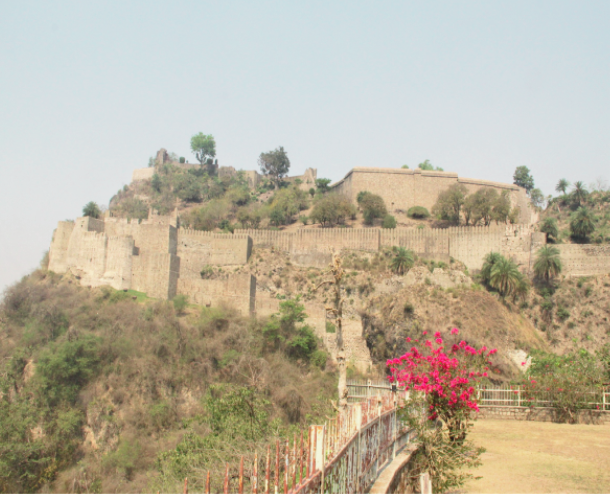
The unbearable heat pushed us indoors for the rest of the day. The evening was cooler as we ambled down the road from Tibet main temple towards MacLeodganj. The pictures of Saint John in the Wilderness Church are no match to the beauty that envelops you when you reach the gates. This church has been built in new Gothic style, in 1852, and is dedicated to Saint John the Baptist, who baptised Jesus. The stark grey stone building is decorated with beautiful stained Belgian glass, donated by Lady Elgin, the wife of Indian Viceroy Lord Elgin.
The church must have been under British army control, as we saw memorial plaques erected for fallen soldiers of World War I, in action at France, Mesopotamia, Palestine and Baluchistan. Many of them mentioned the 1st Gurkha Rifles, one of the earliest battalions of the army. There is also a huge plaque dedicated to all the officers who fell in the Great War, without mentioning the names. At the back of the church is a memorial erected in memory of Lord James Bruce, Earl of Elgin, Viceroy and Governor General of India, by his widow Lady Elgin. Pines and junipers offer the canopy to the church. On the way back, the daughter insisted on her silver ring, and what would be a trip to Dharamshala without Tibetan silver? A few minutes into bargaining, we succeeded, and bought the souvenir.
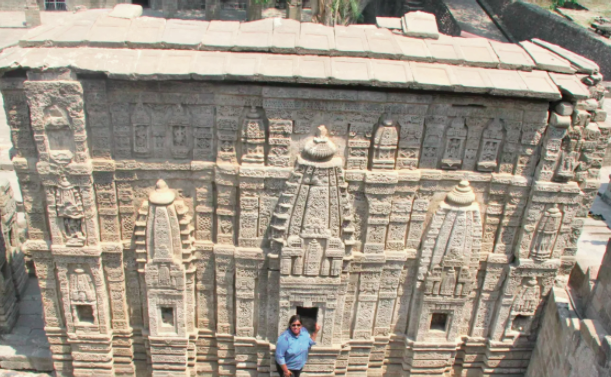
Himachal to average South Indians is Shimla, Kulu and Manali. We opted to touch the lesser explored parts, and don’t regret the decision. Be it the snow-capped Sach Pass, or the greenery of Khajjiar, the enormous Kangra Fort or the museums, we enjoyed every bit of the trip! As the flight taxied along the runway after a smooth touch down, the daughter asked, “Mom, when will you take us to tourist places like Shimla?” Probably sometime later, I smiled. Perhaps she will grow up to be a wanderess. Like the Wanderess of Roman Payne- “bound by no boundaries, contained by no countries, tamed by no time”…

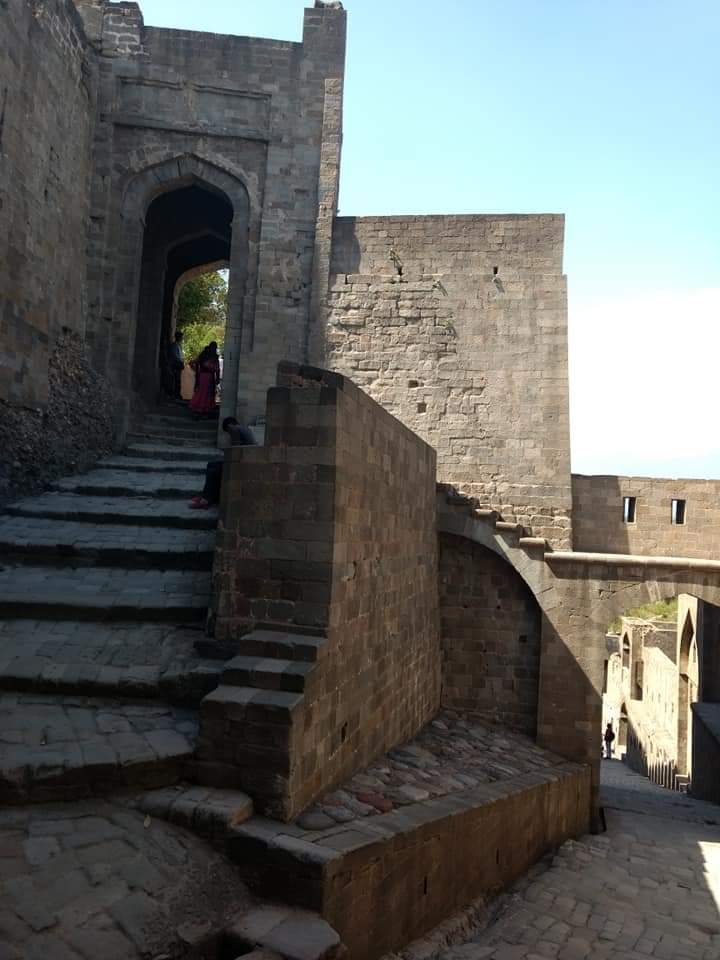
 [/column]
[/column]